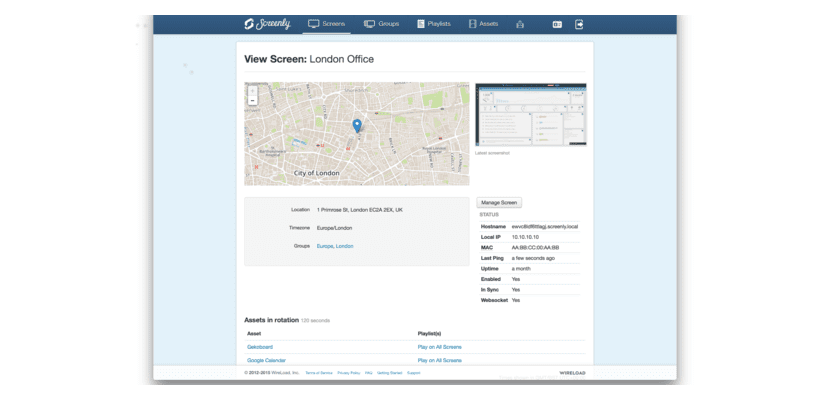
Today Wednesday May 18, Screenly, the most popular digital signage solution for the Raspberry Pi, and Canonical, which as you all know is the company behind Ubuntu, the most important open source platform, have been pleased to announce a partnership to develop Screenly with Ubuntu Core as a base. In this way, Screenly will adopt Ubuntu Core to give your customers a stable platform that is secure, robust and simple to use and manage, all on a Raspberry Pi available for about $ 35.
Screenly is marketed as a box or 'player' of Digital signage easy to install and as a cloud-based interface that is used on thousands of screens around the world. This enables restaurants, universities, shops, offices and anyone with a modern television or monitor to create reliable and secure signage. This low-cost solution is capable of displaying full HD quality moving images, web content, and still images.
Screenly will use Ubuntu Core
On the other hand, Ubuntu Core offers a production environment for IoT devices, also known as the Internet of Things. In particular, this new installment "Snappy" of Ubuntu offers the ability to update and manage the system and applications independently. This means that Screenly players will stay up-to-date with the latest version of Screenly software while benefiting from continuous operating system updates that improve their security, stability, and performance. Transactional updates mean that any update can be automatically returned, ensuring reliable performance even in the event of a failed update.
Also, Ubuntu Core devices can be managed from a central location, allowing Screenly users to globally manage a good number of digital signage with ease. A compromised screen can be corrected immediately and the security of devices that are in a public environment is dramatically improved.
Viktor Petersson, CEO of Screenly, explains that “Ubuntu Core allows us to be more flexible and focus on our software rather than managing an operating system and software distributions across our large fleet of devices.«. Ubuntu Core also offers standardized operating systems and interfaces that are available for many chipsets and hardware. This means that Screenly can expand its player portfolio across platforms without the cost of porting software to a new architecture.
«In terms of software, it can run on multiple hardware platforms and therefore if one of our partners needs a different hardware platform, the need to re-create and test our entire solution for a new operating system vanishes. This takes the bargaining power away from the hardware provider and returns it to the service providers, which for us means we will see further innovation in this area.«. Victor Petersson, CEO of Screenly.
On the other hand, Mark Shuttleworth, CEO and founder of Canonical, adds that «Ubuntu Core is perfectly suited for digital signage applications. Its application isolation and transactional updates provide unrivaled security, stability, and ease of use - vital for content that is constantly being viewed. We are delighted to be working with Screenly, whose agile approach is a perfect example of innovation in the digital signage space.«.
what is digital signage? in my country that concept is not used
Hello Pepe. It's basically any screen that displays information, like a looping ad. It is similar to what some shops show with moving LEDs, but more modern.
A greeting.
Thank you very much, it was already clear to me
regards
The correct term is digital signage.
https://es.wikipedia.org/wiki/Se%C3%B1alizaci%C3%B3n_digital